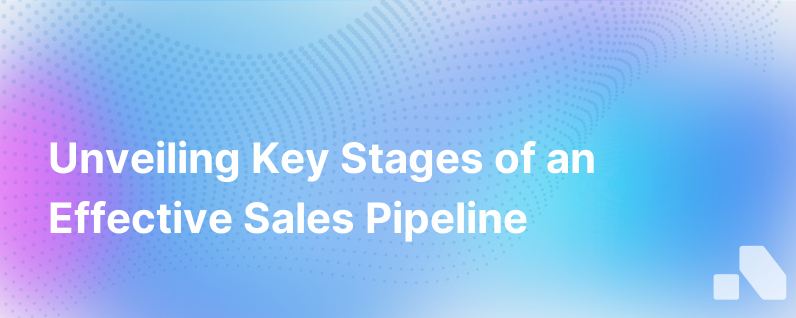What Are The Sales Pipeline Stages
Published on August 21, 2023 by David Zhang
The heartbeat of any sales team is undeniably its sales pipeline. A healthy, pulsing sales pipeline showcases not just a list of potential sales but a detailed roadmap of where prospects are on their journey towards becoming paying customers. Understanding and mastering the stages of the sales pipeline is essential for any business aiming to increase its revenue and drive growth. Whether you are a seasoned sales professional refining your strategy or a newcomer to the world of sales, grasping the intricacies of each stage can significantly elevate your sales performance.
Introduction to the Sales Pipeline
The sales pipeline comprises a series of stages that a salesperson uses to guide a prospect from initial contact to purchase. Each step represents a different level of engagement with the prospect, requiring specific actions from sales representatives to move the lead towards closing a deal. A well-structured pipeline is a visual representation of where prospects are in the sales process, serving as a valuable tool for sales forecasting and strategy development.
Here's an in-depth look at the typical stages of a sales pipeline:
Stage 1: Lead Generation
The genesis of any robust pipeline begins with lead generation - the process of attracting and converting strangers into leads. Leads can come from various sources, from word-of-mouth referrals and networking to digital marketing efforts such as content marketing, email campaigns, and social media outreach.
During this stage, it's critical to capture as much relevant information as possible about each lead to tailor future communications and ensure that prospects are an appropriate fit for your product or service.
Stage 2: Lead Qualification
Once a series of leads is in place, the next vital stage is lead qualification. This is where sales reps assess whether a lead has the potential to become a customer. The qualification process commonly involves scoring leads based on predetermined criteria, such as BANT (Budget, Authority, Need, and Timeline), ensuring that valuable time and resources are directed toward prospects most likely to convert.
This stage might involve a series of discovery calls and emails to understand the lead's needs, challenges, and purchasing power.
Stage 3: Meeting Scheduling
Qualified leads transition into scheduling a meeting or demonstration, where sales representatives aim to build a relationship and delve deeper into each lead's specific needs. This stage serves to establish trust and present your product or service as a solution to the lead's problem or need.
Efficiently managed schedules for demos or consultations can mean the difference between keeping leads warm and engaging or risking them going cold.
Stage 4: Needs Analysis
During this stage, sales representatives must focus on meticulous needs analysis. By thoroughly understanding the prospect's business, pain points, and desired outcomes, sales professionals can tailor their pitch, demonstrating clear value and differentiation from competitors.
It requires active listening, empathy, and the ability to articulate how your offering can uniquely resolve the prospect's challenges.
Stage 5: Proposal
Once a firm understanding of the prospect's needs is established, you can move to the proposal stage. Here is where you present a tailored solution in a formal document or presentation that outlines how your product or service will address the prospect's challenges, complete with pricing, timelines, and any case studies or testimonials that can help reassure the prospect.
Highly effective proposals are those that resonate with the decision-makers on multiple levels, providing both logical evidence and emotional appeal.
Stage 6: Negotiation
After the proposal is delivered, negotiation may ensue. This is a delicate dance where sales professionals work to come to an agreement that benefits both the customer and the company. It often involves discussing pricing, terms, and conditions.
Outstanding negotiation skills are a must-have at this stage, ensuring that deals remain profitable while meeting the prospect's expectations.
Stage 7: Closing
The penultimate stage is where all previous efforts come to fruition - the closing of the deal. This is when prospects become customers. It's vital to maintain a positive customer experience up until the final agreement, ensuring all paperwork is in order, and the customer is assured of their decision.
Sales reps need to be proactive, anticipate any last-minute objections or hurdles, and be ready to offer assurances or incentives that make signing on the dotted line a natural and comfortable step for the prospect.
Stage 8: Post-Sale Follow-up
A frequently overlooked but equally significant stage of the pipeline is post-sale follow-up. It involves taking steps to ensure customer satisfaction, addressing any issues that may arise, and laying the groundwork for future upselling or cross-selling opportunities.
Following up consistently and effectively can solidify customer loyalty and increase the likelihood of referrals, creating a steady stream of new leads entering the pipeline.
Each stage of the sales pipeline comes with its nuances and challenges. Managed effectively, the pipeline serves as a dynamic tool that enables sales teams to predict revenue, identify bottlenecks, and continuously refine their sales strategy.
In the ultra-competitive landscape of B2B sales, tools like Aomni offer AI-driven insights and real-time analytics to empower sales teams to navigate through the pipeline stages with greater agility and precision. The key to success lies not in the volume of sales leads but in the quality and progression of those leads through a well-defined and robustly managed pipeline.
In conclusion, the stages of the sales pipeline form the cornerstone of any sales strategy. Understanding, mastering, and optimizing these stages can lead to increased efficiency, more closed deals, and expanded revenue streams. The final piece of advice is to leverage technology, like Aomni, to keep the pipeline flowing smoothly, ensuring that no opportunity for a sale is missed.